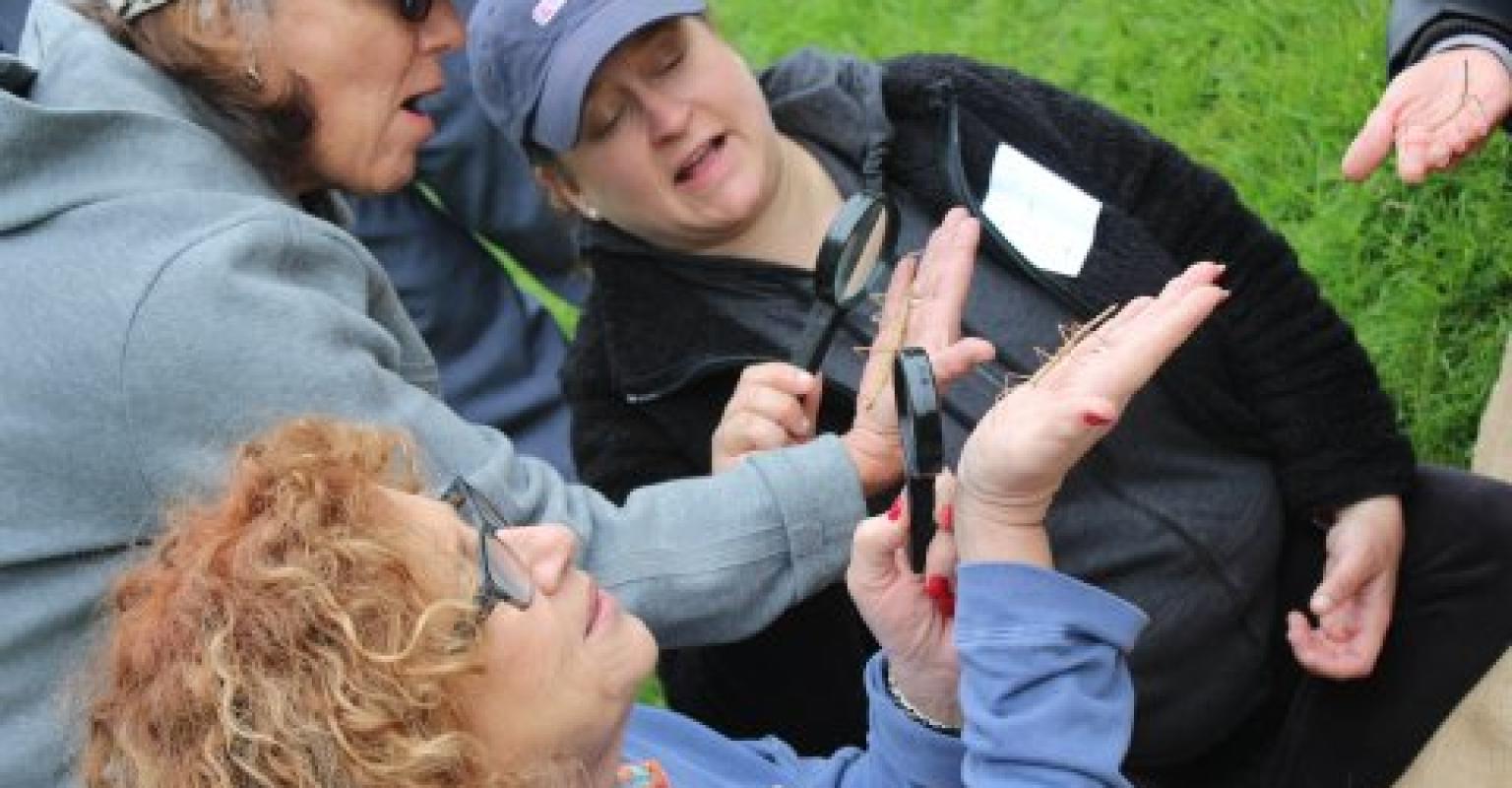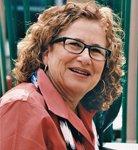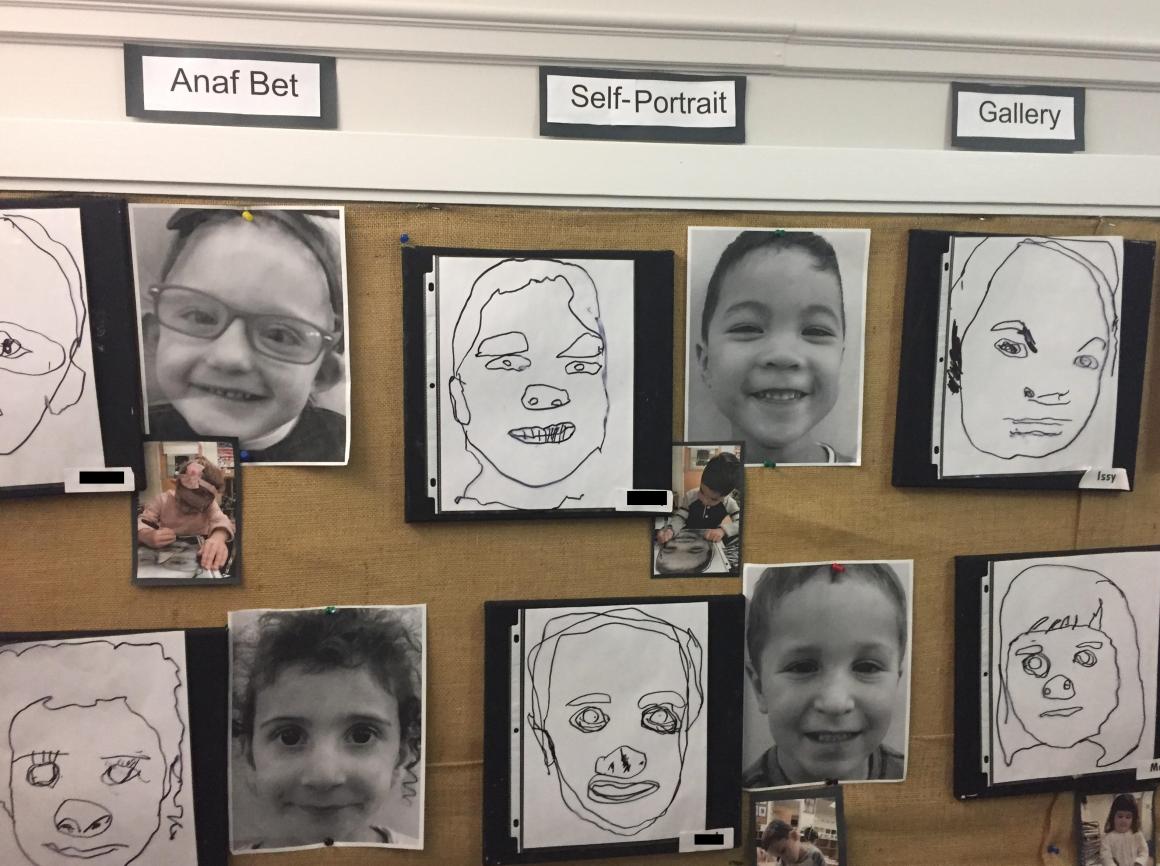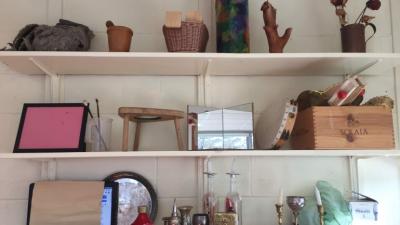Ronnie Goldberg Becher has been Director of the Beth El Nursery School since September 2000. Ronnie served as the Education Director of Gananu Early Learning Center in New York from 1996 to 2000 and came to Beth El with a wealth of knowledge in teaching, administration, supervision, and program development. Ronnie received her Bachelor’s degree from Sarah Lawrence College and a Master’s degree from Teachers College at Columbia University, where she was awarded a fellowship for a reading and writing project. She was also the recipient of the prestigious Wexner Heritage Foundation Fellowship and has a long list of achievements and professional affiliations. She is currently the President of JECA, the Jewish Early Childhood Association, a professional organization for Jewish early childhood directors in the larger metropolitan area.
Seeing Children as Curious and Capable
The Reggio-inspired vision at Beth El Nursery School has been shaped over a 6 year period. Ronnie’s journey began after visiting schools of inspiration such as the Greenfield Hebrew Academy in Atlanta, GA (now the Atlanta Jewish Academy), the Moriah Early Childhood Center, in Deerfield, IL, and the Roseville Community Preschool, in Roseville, CA. She says the experience of visiting other schools further along on their journey was transformational. Ronnie further built upon that inspiration by participating in numerous professional networks and by being involved in cohort initiatives like Project LEAD through The Jewish Education Project.
Educators visiting Beth El Nursery School with us were seeking their own source of inspiration and began their day in a sun-filled room called The Den, a newly remodeled location in the synagogue designed to be a welcoming and cozy spot for visitors and families. Ronnie shared how she and her staff now embody the language, the philosophy, and the Reggio-inspired practice that once inspired her and her staff when they visited other schools. Now she says proudly, “we have some of that here”. Noting that it’s become a place where children’s ideas and perspectives shape the learning from day to day and differently each year. Ronnie has cultivated an inspirational message about school change that’s conveyed with a healthy dose of reality that other directors and educators, newer to the Reggio-inspired philosophy, can easily digest and latch on to. She speaks frequently about the ongoing involvement and work with her staff, and between staff members. She emphasizes the importance of a consistent message that is given to parents from the time they first visit the school through to their relationship with their child’s teacher once they are enrolled. And she’s unapologetic about her school’s Jewish curriculum approach which leans more towards the joy and rituals and less towards the stories.
Ronnie shared some of her guiding principles of education:
-
Parents are the experts of the children. The more they tell us about their children the better we can do our work. So we look for opportunities to partner with them. And there are a number of ways to do that.
-
The environment is the 3rd teacher in Reggio. We are exceptionally mindful of how we set up our classroom. We have moved away from a lot of the plastics and prefab materials. We look to use natural materials, wood, and clay.
-
Less is more. Classrooms will have paper and crayons, and maybe scissors at the beginning of the year. We have a myriad of art materials but they are thoughtfully introduced as the year goes on. We don’t start out the year with our classroom walls “full”.
-
The work of the children fills our walls. We want the work of children, the pictures of children engaging in the work, and the documentation, to be what’s on display.
And three main types of documentation created by the school staff:
-
Daily Reflections. Monday through Thursday each teacher sends home an email with a paragraph or two - a moment of reflection from the day in the classroom or the outside space. They are also printed and put in a sleeve hanging outside the classroom.
-
Classroom Binders. The daily reflections are reworked for classroom use - increasing the photo size and decreasing the written copy - and placed in a binder. The children use these binders to self reflect, narrate their experiences, and plan future activities.
-
Documentation Boards. These boards tell a larger story and help explain the learning the children are engaged in. These documentation boards help us connect and communicate with parents about their children and parents feel more included in the school through these documentation boards.
And her school's approach to blending Jewish and Reggio approaches:
-
Traditions remain an important factor in the school's educational approach. During the holidays activities focus on family, food, celebrations, dance, and cooking.
-
Each class creates a ritual object, BUT, it’s something elevated. Something of value. Something the family will cherish and use each year. A different object is made each year as the children grow through the grades. This minimizes repeat experiences and provides deeper joy and usefulness at home.
-
We link the classroom holiday activities to that things the children like to do and that are developmentally appropriate. The approach is also interdisciplinary and often involves math, science, language, aesthetics, and design.
-
Ahead of each holiday teachers create classroom provocations that excite and engage the children in wonder and questions. For example, ahead of Passover, a seder table is created for the children to explore. The children notice the subtle and larger changes and are immediately drawn to them.
-
Teachers are responsive to children’s inquiries. They use clipboards, index cards, and post-it notes to record what the children say and wonder about what’s been laid out for them to explore. Jewish activities are not just created in a vacuum. Teachers listen to the children’s ideas and conversations. If the children are interested in matzo they offer explorations around that. If it’s the haroset that excites them, then the teachers respond accordingly.
More about the Experience:
After educators had the chance to walk in and out of the classrooms independently and visit the outdoor nature space, they were joined by three Beth El educators representing three different classrooms. Eden Aronoff 2s teacher, Emily Herzfeld 3s teacher, and Jana Rockoff 4s teacher described their own perspectives and experiences of child-centered learning and how it takes shape in each of their classrooms. In Eden's class, the children have been engaged in all things babies. In Emily's class, the focus has been on medical practices and caring for one another. And for Jana, she described that sometimes the focus is not on any specific content area but can be on a skill or aesthetic value that the children are engaged in. In her class, the children have been collaging and working on collaborative artwork. In this case, the content includes a new language emerging through their work such as "sticky" and "stacking".
Wisdom shared by the teachers:
- Honoring children's thoughts and ideas by using a "sharing chair" or other intentional opportunities to listen to children.
- Realizing you don't have to answer every question.
- Communicating with parents is essential, and tools like Big Canvas can help.
- Listening is more effective than talking - use the WAIT acronym (why am I talking?)
- Provocations offer children excitement and wonder.
- Each teacher needs to find their equilibrium between teacher-directed and child-centered.
- It takes courage to trust yourself.
"I could have stayed another hour listening to the teacher's insights!"
- Participant
"When families walk into your school, they should know what you are about. The learning should call out to them."
- Director, Ronnie Becher
Forward Thinking/Guided Questions:
-
Ronnie spoke about her earliest inspirations. What have been your earliest inspirations? Where or who has given you a sense of, “I can do this”
-
The teachers at Ronnie’s school demonstrated a high level of collaboration and conversation about their child-centered curriculum approach. How might you strengthen conversations with your fellow teachers around the children’s learning?
Resources for further learning on this topic:





